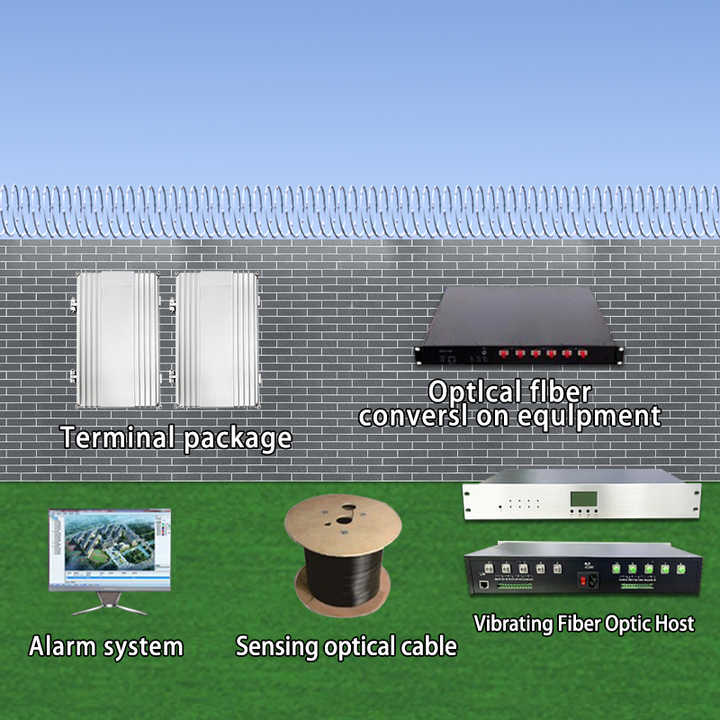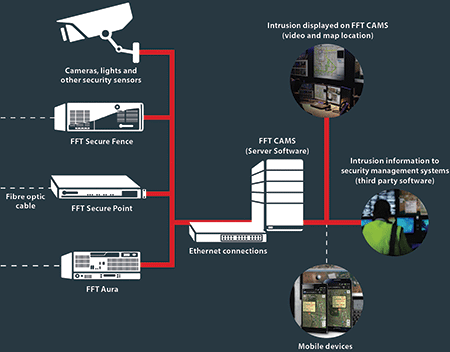How to Decide on a Fiber Optic Security System for Maximum Protection and Speed
How to Decide on a Fiber Optic Security System for Maximum Protection and Speed
Blog Article
The Ultimate Overview to Fiber Optic Safety And Security Equipments for Your Service
In an age where safety worries are extremely important for companies, understanding the ins and outs of fiber optic technology can be transformative. This guide lays out how integrating fiber optic safety and security systems not only enhances data protection but additionally supplies advantages like resistance to disturbance and real-time tracking capabilities.
Recognizing Fiber Optic Innovation

The core of a fiber optic cord consists of a thin glass or plastic center, bordered by a cladding layer that shows light back into the core. Single-mode fibers are designed for long-distance transmission, while multi-mode fibers are ideal for much shorter ranges, typically used within structures.
Optical fiber are not just quicker however additionally much more safe and secure than standard circuitry. Their fundamental resistance to electromagnetic interference and the problem of tapping into the signal without detection make them a recommended selection for services prioritizing data integrity and safety and security. As companies significantly rely upon protected and effective interaction systems, comprehending fiber optic innovation ends up being crucial for educated decision-making.
Trick Benefits of Fiber Optic Safety
When considering safety and security alternatives for a service, the advantages of fiber optic systems are specifically compelling. Fiber optic technology provides exceptional information transmission rates and data transfer ability, making it suitable for dealing with high-resolution video clip feeds from monitoring cameras. This capability guarantees that safety personnel get real-time information, boosting general action times to prospective safety and security risks.
Moreover, fiber optic cable televisions are inherently immune to electro-magnetic disturbance, which can jeopardize the integrity of traditional copper-based systems. This resistance guarantees that the data transmitted remains safe and secure and uninterrupted, supplying a much more reliable security facilities. In addition, optical fiber are less prone to physical damages, as they are made from glass as opposed to steel, lowering upkeep prices and downtime.
An additional significant benefit is the increased scalability of fiber optic systems. As company needs progress, fiber networks can be quickly expanded to fit extra safety tools without significant overhauls to the existing facilities. Fiber optic systems offer improved cybersecurity features, including security capabilities that secure delicate data from unauthorized gain access to. Jointly, these advantages make fiber optic security systems a durable choice for organizations seeking to enhance their protection procedures.
Setup Process and Considerations
Thinking about the intricacies included, the installation procedure of fiber optic security systems calls for cautious planning and implementation. The initial action includes a detailed site assessment to determine ideal areas for cabling and tools. This analysis ought to take into consideration ecological factors, existing facilities, and potential vulnerabilities.

Furthermore, the installment should abide by regional building regulations and market criteria. This may consist of coordinating with different stakeholders such as structure managers, IT teams, and protection personnel to make certain smooth assimilation with existing systems.
Post-installation, strenuous testing is needed to confirm system performance and identify any kind of problems that may emerge. By focusing on these considerations throughout the setup process, companies can make certain a durable and reliable fiber optic protection system that satisfies their certain safety demands.
Most Recent Technologies in Fiber Optic Safety And Security
Current advancements in fiber optic technology have actually substantially boosted the capabilities of security systems for companies. Among one of the most significant innovations is the assimilation of fiber optic sensing units that can discover vibrations and invasions along Full Article the border of a facility. These sensors offer real-time tracking, allowing quick action to potential breaches.
Additionally, the development of distributed fiber optic sensing innovation enables the constant surveillance of huge locations with a solitary fiber cable television. This method not only reduces installment costs however likewise boosts the reliability of keeping track of systems by removing the demand for numerous, different sensing units.
Moreover, developments in multiplexing techniques have actually made it possible for companies to transmit vast quantities of information over fiber optic networks, improving the capabilities of video surveillance systems. High-definition video feeds can now be sent over fars away without loss of high quality, ensuring that security employees have access to clear and workable details.
Last but not least, using expert system (AI) in combination with fiber optic systems is revolutionizing threat discovery. AI formulas can evaluate data from fiber optic networks to recognize uncommon patterns or behaviors, permitting proactive security measures. These technologies jointly stand for a significant jump onward in fiber optic safety innovation.
Picking the Right System for Your Service
Selecting the ideal fiber optic security system for your service is important for making certain optimum protection and comfort. To make an informed selection, examine your details security requirements, taking into consideration variables such as the size of your facilities, the nature of your procedures, and possible vulnerabilities.
Begin by reviewing the degree of safety needed; for example, risky environments may demand sophisticated systems with incorporated security and visit our website invasion discovery capacities. Next, think about scalability; as your business grows, your security system ought to be qualified of broadening to fit raised needs without substantial overhauls.
Furthermore, check out the dependability and performance of different systems. Try to find providers with recognized credibilities and customer testimonies that testify to their solution high quality. It's additionally a good idea to ask about the technology's compatibility with existing facilities, ensuring a seamless assimilation process.
Verdict
Finally, fiber optic safety systems offer a robust remedy for enhancing company safety and security infrastructures. The combination of high-speed data transmission, resistance to electromagnetic interference, and advanced monitoring capabilities significantly improves general security (fiber optic security system). By recognizing the technology, recognizing its benefits, and considering the setup procedure, companies can make informed decisions. The most recent advancements further bolster the efficiency of these systems, making certain that organizations continue to be secure and versatile in an ever-evolving risk landscape.
Report this page